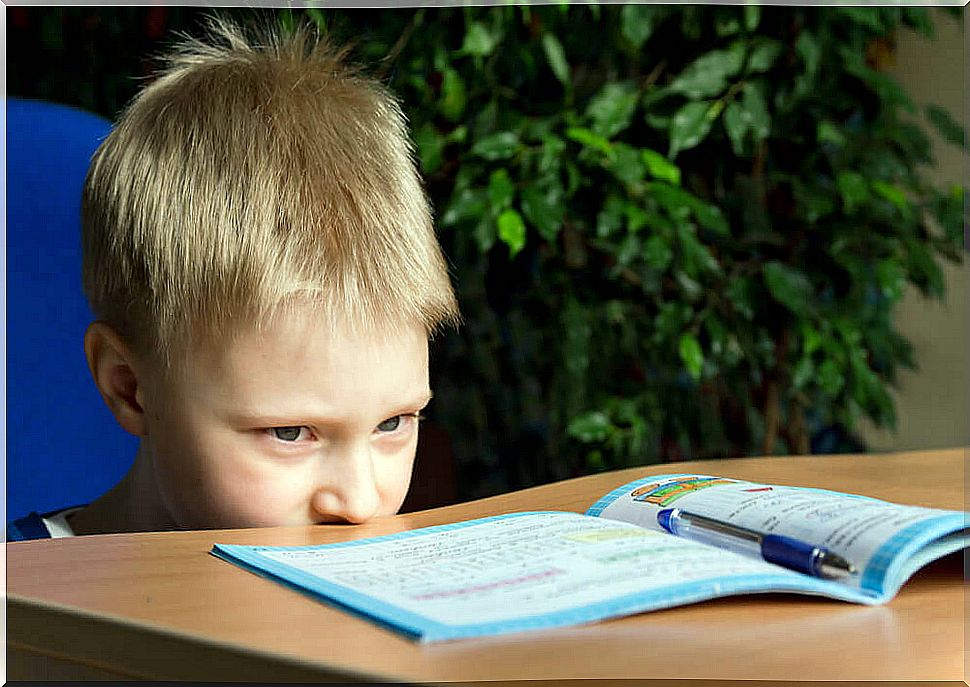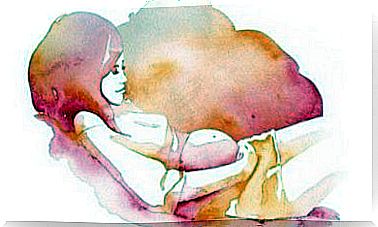Dysgraphia: Types, Causes, Treatment

Dysgraphia is a neurological disorder involving problems with writing. This applies to both handwriting, mechanical and spelling. It is estimated that 5 to 20% of students have difficulty writing, but the exact incidence of dysgraphia is unknown.
Most children have difficulty writing, as this activity requires study and practice. However, if your child’s handwriting is very disordered despite your efforts, it is possible that your little one is suffering from the disorder. Find out more about it.
Dysgraphia and its symptoms
Dysgraphy makes writing difficult and negatively affects the consistency of written words. Focusing attention on transcription disrupts the expression of concepts and ideas. Therefore, the problem includes learning to write as a whole.
Common symptoms of dysgraphia can be found on Understood.org . Some of them are:
- Incorrect putting letters.
- Inconsistent use of spaces between characters.
- Difficulty writing in a straight line.
- Letters of different sizes.
- Continuous plotting.
- Problems with spelling – incomplete words, missing letters, mistakes.
Apart from the errors on the paper, we are told a lot by the attitude the child adopts while writing. A child with dysgraphia holds the pen in an unusual way and finds himself in an odd writing position or places the page incorrectly.

Dysgraphy and its types
There are different types of dysgraphia , according to Special Needs . Here they are:
- Dyslectic: words are written in an incomprehensible way, but sentences are composed.
- Motor activity: caused by motor problems and abnormal muscle tone. Own and rewritten sentences are incomprehensible. People with this problem are able to form opinions, but they find it very difficult.
- Spatial: a child with this problem is not able to grasp the concept of space, connects sentences, does not stick to lines or margins. However, the sentences are understandable and the letters form a coherent whole.
- Phonological: is characterized by problems with writing and spelling new, complex words. Children with this problem are unable to memorize phonemes.
- Lexical: This is a rare form of dysgraphy where words that are spelled as they say are spelled correctly, as opposed to irregular words. The most common language is English and French.
The reasons
Determining the cause of dysgraphia in children can turn out to be quite a challenge. In adults, it can be the result of brain damage, tumors, strokes, or other neurological problems.
In children, the causes of dysgraphia are of two types: neurological or motor. The former do not have to be serious – sometimes some minor disturbances hinder the correct ordering of letters. Another disorder associated with dysgraphia is ADHD.
Psychomotor causes can be a bit more subtle – such as a congenital disease that causes gradual muscle wasting away.
Diagnosing dysgraphia
The ADDitude portal specializing in ADHD explains that diagnosis of dysgraphia is done in a standard way by evaluating Specific Learning Disorder (SLD) . The child must meet 4 criteria:
- Show at least 6 standard symptoms that make learning difficult for a minimum of 6 months.
- Have significant learning difficulties compared to their peers.
- Troubles should be identified in the school environment, although they are emphasized when starting work,
- The possibility of other diseases such as amblyopia has been rejected .
Treatment
Dysgraphia is a problem that accompanies a person throughout his life and is incurable. Therapy is about supporting development and exercise. However, the problem cannot be solved with drugs or surgery.
However, the patient’s condition can be improved. Occupational therapy often helps, during which the therapist helps the child write more effectively and adopt the correct postures. Moreover, the school should offer educational cycles that meet the toddler’s needs.

How to work on writing?
Finally, we present a few tips that can be used in the case of dysgraphia to make it easier for your child to function. LDonline.org recommends the following options:
- Give your child a lined piece of paper to help maintain the structure of the handwriting.
- Let your toddler try out different pens and pencils until he finds the right one for him.
- Begin the process of learning to write by presenting ideas as drawings.
- Teach your child different writing techniques. Let him choose the most convenient one.
- Don’t encourage rewriting – it’s better to support autonomy.
Dysgraphia is chronic, but it can be treated
Summarizing dysgraphia in several paragraphs is not an easy task, because it is a complex clinical problem. If you or your child suffer from dysgraphia, we recommend that you browse the sites listed above for solutions.
Dysgraphy is a life-long problem – it cannot be cured. Therefore, therapy and practice are the child’s best allies. Commitment and patience allow you to achieve a certain degree of autonomy in writing.









